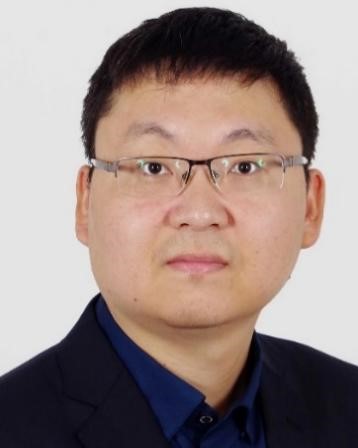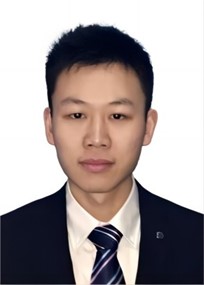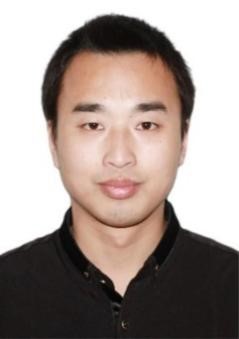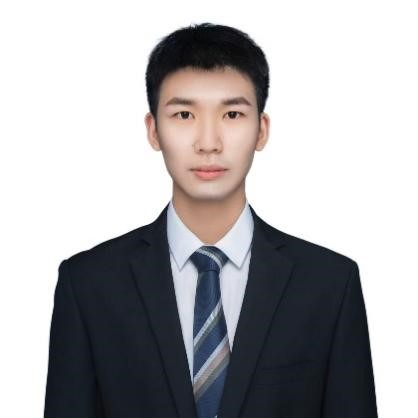Session Aims & Scope
The goal of this session is to provide a platform for international experts, researchers, and industry practitioners to exchange their ideas, share the latest advancements, and discuss challenges in the field of Digital Twin Smart Manufacturing. Through collaborative discussions and presentations, the session aims to foster innovation, promote networking, and contribute to the development of practical solutions that leverage Digital Twin technologies to enhance manufacturing theory and processes, improve efficiency, and drive sustainable growth in the global manufacturing industry.
This session invites submissions of original research papers, case studies, and innovative applications in the field of Digital Twin technologies for smart manufacturing. Topics of interest include, but are not limited to:
- Digital Twin technologies in smart manufacturing systems and processes
- Digital Twin based smart manufacturing theory
- Digital Twin based predictive maintenance for manufacturing systems
- Digital Twin based quality control and process optimization
- Digital Twin based sustainable manufacturing practices and product lifecycle management
- Digital Twin based agile and flexible manufacturing systems
- Digital twin based real-time monitoring and control in manufacturing processes
- Virtual and augmented reality in Digital Twin manufacturing environments
- Internet of Things (IoT) in Digital Twin manufacturing systems
- Human-machine interaction and collaboration in Digital Twin manufacturing processes
- Security, privacy, and ethical considerations in Digital Twin implementations
- Ethical and societal implications of Digital Twin technology in manufacturing
- Case studies and best practices in Digital Twin smart manufacturing
Session Chair(s)

Chair
Dai Guohong
Jiangsu University of Technology
ghdai@jsut.edu.cn

Co-Chair
Chao Yuan
Jiangsu University of Technology
chaoyuan@jsut.edu.cn

Co-Chair
Tan Chao
Jiangsu University of Technology
tanchao@jsut.edu.cn
Session Presentation
1.

Jiang Lin
Associate Professor
Charles W. Davidson College of Engineering, San Jose State University, San Jose, California, USA
Title: Revolutionizing Smart Manufacturing and Future Workforce through Integration of Haptic Bilateral Exoskeleton Gloves and Virtual Reality in Robot Control
Abstract
This research aims to revolutionize Smart Manufacturing and the future workforce by integrating Haptic Bilateral Exoskeleton Gloves and Virtual Reality into robot control, leveraging recent advances in virtual reality technology. The goal is to establish an immersive VR system, using wearables like haptic gloves and VR suits to bridge the physical and cyber worlds. The proposal introduces an augmented tactile-perception and haptic-enabled exoskeleton wearable, enhancing interactions across real and virtual realms. Three key research activities include designing prototypes, utilizing collaborative robots for replicating workplace tasks, and enabling haptic cues for robot teleoperation. This initiative not only promises to redefine workplace interactions but also addresses global manufacturing demands, reducing strain on resources and empowering Industrial 5.0.
2.

Dai Guohong
Professor,President of Jiangsu University of Technology
Jiangsu University of Technology, ChangZhou, China
Title: Digital twin based human-robot collaboration in intelligent disassembly of electric-vehicle batteries for sustainable manufacturing
Abstract
With the development of electric-vehicles, research on disassembly of electric-vehicle batteries is of critical importance for resource recycling. This study devotes to the intelligent disassembly of electric-vehicle batteries by applying digital twin technologies to robots. By introducing the digital twin framework, the theory of intelligent manufacturing can be enhanced, and the safety of workers can be guaranteed. The goal of this research is to present a novel human-robot collaboration architecture for intelligent disassembly, using computer vision-based online detection and force telepresence-based human-robot interaction. The contributions include establishing a mapping relationship between reality and virtuality for the robot disassembly platform, multi-scale object detection and pose estimation, force perception and transmission in non-contact states, robot self-learning and autonomous mission planning. This report is dedicated to leveraging the digital twin theory and intelligent manufacturing approaches to achieve the safe and sustainable manufacturing of electric-vehicle batteries so as to promote the realization of carbon neutrality.
3.

Bai Long
Associate Professor
Huazhong University of Science and Technology
Title: Digital Twin-Enhanced Surface Roughness Prediction in Ultra-Precision Machining: A Hybrid Physics-Data-Driven Approach
Abstract
Achieving superior surface finish quality is paramount for the optimal performance of machined components, and single-point diamond ultra-precision machining has proven effective in attaining exceptional surface quality across a wide range of engineering materials. This research explores the challenge of forecasting surface roughness for titanium alloy workpieces subjected to ultra-precision machining by leveraging a digital twin approach. Experimental data encompassing process parameters and surface roughness measurements were collected during end-face machining trials and used to develop a high-fidelity digital twin of the machining process. Leveraging the ResNet-50 architecture, a deep learning neural network model was integrated into the digital twin to predict surface roughness. In an effort to enhance prediction accuracy, we introduce the energy ratio difference (ERD) as a stability feature, which can be derived using fast iterative variational mode decomposition (FI-VMD) within the digital twin framework. Additionally, the roughness value obtained from an analytic model was incorporated as an input feature for the prediction model. The inclusion of these two novel roughness predictors resulted in an 8.7% improvement in prediction accuracy for the proposed digital twin approach. Furthermore, the impact of tool parameters on prediction accuracy was examined, revealing that the proposed hybrid-driven digital twin model demonstrated superior robustness to tool parameter errors compared to the analytic roughness model. The digital twin’s ability to accurately predict surface roughness enables more efficient process optimization and quality control in ultra-precision machining.
4.

Cui Meiji
Associate Professor
Nanjing University of Science and Technology
Title: Evolutionary Optimization Methods for High-dimensional Expensive Problems
Abstract
Evolutionary computation is a rapidly evolving field and the related algorithms have been successfully used to solve various real-world optimization problems. The past decade has also witnessed their fast progress to solve a class of challenging optimization problems called high-dimensional expensive problems (HEPs). The evaluation of their objective fitness requires expensive resource due to their use of time-consuming physical experiments or computer simulations. Moreover, it is hard to traverse the huge search space within reasonable resource as problem dimension increases. Traditional evolutionary algorithms tend to fail to solve HEPs competently because they need to conduct many such expensive evaluations before achieving satisfactory results. To reduce such evaluations, many novel surrogate-assisted algorithms emerge to cope with HEPs in recent years. Yet there lacks a thorough review of the state of the art in this specific and important area. This report provides a comprehensive survey of these evolutionary algorithms for HEPs. We start with a brief introduction to the research status and the basic concepts of HEPs. Then, we present surrogate-assisted evolutionary algorithms for HEPs from four main aspects. We also give comparative results of some representative algorithms and application examples. Finally, we indicate open challenges and several promising directions to advance the progress in evolutionary optimization algorithms for HEPs.
5.

Tan Qifeng
Associate Professor
Jiangsu University of Technology
Title: Condition monitoring of micro drill based on dual driven method of data and model in the PCB drilling process
Abstract
The wear of micro drill in the PCB drilling process will lead to the degradation of drilling quality. Aiming at the drilling quality control, we propose a online monitoring method of drill condition based on dual driven method of data and model. With the support of key technologies such as mechanism modeling, signal features extraction, multi-sensor data fusion, tool state analysis and prediction, multi-model fusion, etc., the intelligent control of the drilling process has been accomplished, providing a feasible technical basis to realize online monitoring of drill wear in the PCB drilling process.
6.

Li Yang
Associate Professor
Jiangsu University of Technology
Title: Research on a fast performance prediction method of grain combine harvesters based on digital twin
Abstract
The threshing and cleaning devices are critical components of the harvester’s digestive system and play a pivotal role in determining overall operational performance. Therefore, optimizing the performance of these devices is crucial. Currently, traditional design methods for these often rely on empirical design combined with bench tests or prototype machines for validation. However, this approach consumes significant resources in terms of manpower and time. In response to these issues, this study proposes a rapid simulation method based on digital twin model driving. The proposed method involved designing sensor monitoring schemes to represent the devices’ performance followed by collecting field test data under various operating conditions. Subsequently, the CFD/CFD-DEM numerical simulations were employed to explore effective methods for representing device performance. Finally, integrating multi-source sensor data with numerical simulation data and theoretical parameter analysis enabled the construction of a digital twin model for the threshing and cleaning devices. The accuracy and efficiency of this model were then verified. This methodology allows for efficient verification of threshing and cleaning device performance across typical working conditions within a short timeframe. As such, it provides an effective solution for reducing product iteration time while saving on design costs.
7.

Han Zhenhua
Associate Professor
Jiangsu University of Technology, ChangZhou, China
Title: An accurate fatigue life calculation method on cycloidal gear of RV reducer based on finite element analysis
Abstract
RV(rotate vector) reducer is crucial in precision transmission equipment such as industrial robot joints, CNC machine tool turrets, and semiconductor manufacturing equipment. Cycloidal gear pair is vital for achieving high precision transmission performance in RV reducer due to their high reduction ratio, compact size and high efficiency. Digital twin technology has irreplaceable advantages in the monitoring of equipment throughout its entire service life. Therefore, for implementing digital twin technology to monitor the lifecycle of RV reducer, an accurate calculation method on the fatigue life of cycloidal gear is critical. However, traditional analytical methods assume linear deformation conditions for cycloidal gear contact mechanics, which cannot accurately reflect the mechanical behavior of cycloidal gear under load. As a result, there is a significant difference between actual service life and calculated fatigue life. This study introduces an effective method for evaluating the fatigue life of cycloidal gear. A load tooth contact model for cycloidal gear pair is established using ABAQUS software. By applying rotation to pin gear housing and load torque to cycloidal gear as boundary conditions, a multi-load step static analysis is conducted using the Newton-Raphson algorithm within ABAQUS/Standard. The distribution and maximum values of contact stress in the gear pair are calculated. Finally, the accurate fatigue life of cycloidal gear is calculated by combining stress results from finite element analysis with load time history of cycloidal gear. The Miner linear damage rule and Fe-safe software are employed for this calculation. This approach establishes a foundation for developing a digital twin model and implementing intelligent manufacturing of RV reducer.
8.

Lu Hengyu
Postgraduate student
Jiangsu University of Technology
Title: Digital twin based intelligent assembly for 3C tiny screws
Abstract
With the development of technology and intelligent manufacturing, 3C devices play an important role in life. Intelligent assembly for screws is the key to ensuring efficient production. This study applies digital twin technology to robot intelligent assembly of 3C devices. By introducing the digital twin framework, the real-time assembly data is accurately transmitted to the virtual model, enabling virtual debugging of robot assembly, saving production resources and improving production efficiency. The goal of this study is to present a digital twin based intelligent assembly system for 3C devices production lines. The contributions include establishing a digital twin system for mapping real and virtual environments of the robot assembly platform, enabling real-time data exchange between the virtual and physical environments. The data of screw semantic segmentation is transmitted to the digital twin system, which autonomously plans tasks for the robot. This study integrates digital twin theory and intelligent manufacturing approaches to achieve intelligent production of 3C devices, further promoting the development and advance of the manufacturing industry.